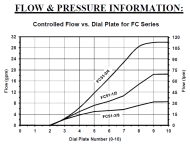aczlan
Good Morning
- Joined
- Mar 7, 2008
- Messages
- 17,540
- Tractor
- Kubota L3830GST, B7500HST, BX2660. Formerly: Case 480F LL, David Brown 880UE
Right but you went larger he needs to go smaller. All that putting a set screw with a hole in it will do is reduce the max amount of fluid that can go through. The opening at the sealing point is going to stay the same and it l will open at the same rate so the only difference would be that it will have a lower max flow through the valve.How do you know that? After I drilled mine, it has a smooth control from zero to max, just like it did when the hole was smaller.
Aaron Z


